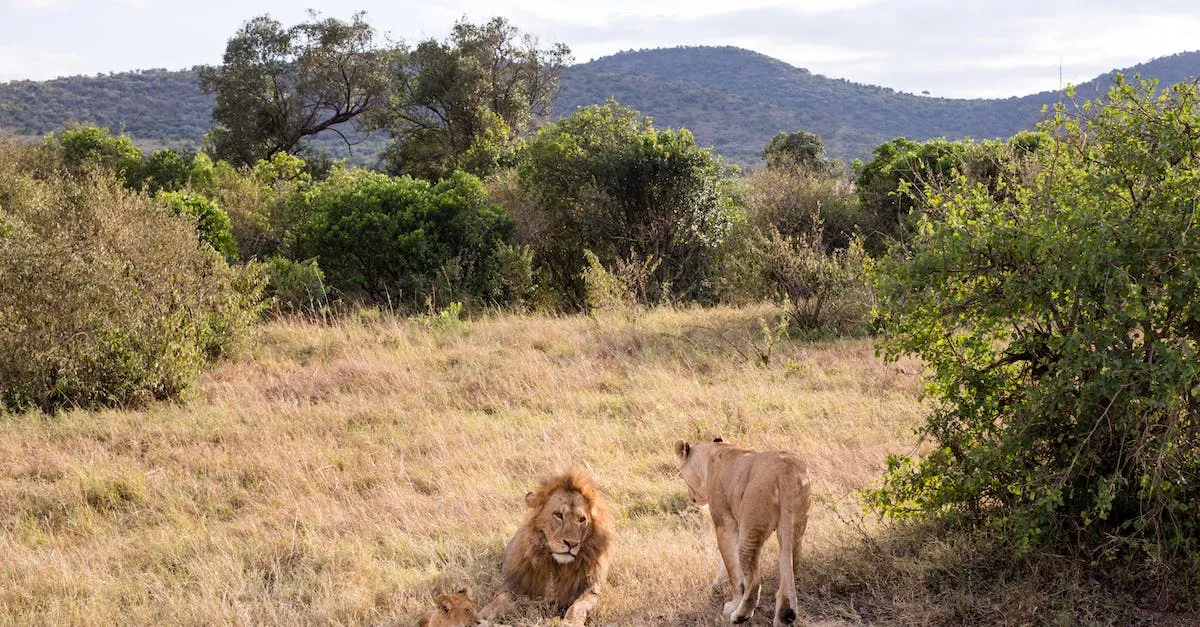Florida Panther Vs Mountain Lion: Key Differences And Similarities
With their tawny fur and muscular builds, Florida panthers and mountain lions look remarkably alike. But are they the same species? Or does their shared territory point to key differences?
If you’re short on time, here’s a quick answer: While they share some physical and behavioral traits, Florida panthers and mountain lions are separate subspecies of cougar with distinct evolutionary histories and adaptations to their native habitats.
In this comprehensive guide, we’ll analyze the overlaps and distinctions between these big cats through side-by-side comparisons of size, physical features, geographic range, habitat, hunting skills, conservation status, and more.
Taxonomy and Evolutionary History
The Florida Panther and the Mountain Lion, also known as the cougar or puma, belong to the same species, Puma concolor. They are both members of the Felidae family, which includes other big cats such as lions, tigers, and leopards.
Let’s delve into their taxonomic classification and evolutionary history to understand their similarities and differences.
Scientific Classification
The scientific classification of the Florida Panther and the Mountain Lion is as follows:
| Species | Genus | Family | Order | Class | Phylum | Kingdom |
|---|---|---|---|---|---|---|
| Puma concolor | Puma | Felidae | Carnivora | Mammalia | Chordata | Animalia |
As we can see, both the Florida Panther and the Mountain Lion share the same species, genus, and family. They have a common evolutionary lineage and are closely related.
Genetic Analysis
Genetic analysis has provided valuable insights into the evolutionary history of these big cats. Studies have shown that the Florida Panther is a unique subspecies of the Mountain Lion, with a distinct genetic makeup.
Due to the geographic isolation of the Florida Panther population, they have developed genetic differences from other Mountain Lion populations.
According to a study published in the journal “Conservation Genetics” in 2017, the genetic diversity of the Florida Panther is significantly lower compared to other Mountain Lion populations. This reduced genetic diversity can lead to inbreeding depression and increased susceptibility to diseases.
Conservation efforts are crucial to prevent the loss of genetic diversity and ensure the survival of the Florida Panther.
Geographic Separation
The geographic separation between the Florida Panther and the Mountain Lion is a key factor in their differences. The Florida Panther is found exclusively in the southern part of Florida, inhabiting the Everglades and surrounding areas.
On the other hand, the Mountain Lion has a much broader distribution, ranging from North America to South America.
Historically, the Florida Panther population was connected to the broader population of Mountain Lions in North America. However, human activities, such as habitat destruction and fragmentation, led to the isolation of the Florida Panther population.
This isolation resulted in their genetic divergence and the development of unique characteristics.
To learn more about the Florida Panther and the Mountain Lion, you can visit the official websites of the U.S. Fish and Wildlife Service and the National Park Service.
Physical Attributes
Size
The Florida Panther and the Mountain Lion, also known as the Cougar or Puma, are both large wild cats. However, there are some differences in their size. The Florida Panther is generally smaller, with males weighing between 100 and 160 pounds and measuring around 6 to 7 feet in length from nose to tail.
On the other hand, the Mountain Lion is slightly larger, with males weighing between 120 and 220 pounds and measuring around 7 to 9 feet in length. It’s important to note that both species can vary in size depending on factors such as their geographic location and availability of prey.
Fur Color
One noticeable difference between the two species is their fur color. The Florida Panther has a tan or brownish coat, with lighter underparts and a white or cream-colored belly. This coloration helps them blend in with their surroundings in the dense forests and swamps of Florida.
In contrast, the Mountain Lion has a more uniform fur color, which is typically tan or light brown. This adaptation allows them to camouflage themselves in the rocky and mountainous terrain where they are commonly found.
Facial Features
While both the Florida Panther and the Mountain Lion have similar facial features, there are subtle differences that can help distinguish between the two. The Florida Panther has a slightly shorter and rounder face compared to the Mountain Lion, which has a longer and more angular face.
Additionally, the Florida Panther has a more prominent forehead and a shorter muzzle. These variations in facial features are often used by experts to identify and study the different species.
For more information about the Florida Panther and the Mountain Lion, you can visit the following websites:
Habitat Range and Population
Florida Panther Territory
The Florida Panther is a subspecies of cougar and is found exclusively in the state of Florida in the United States. Its historical range included the entire southeastern United States, but due to habitat loss and fragmentation, its population is now confined to the southern tip of Florida, primarily in the Everglades and Big Cypress National Preserve.
The Florida Panther’s habitat consists of a mix of wetlands, forests, and swamps, providing them with ample cover for hunting and denning. These areas are crucial for the survival of the Florida Panther, as they rely on the dense vegetation for protection and a steady supply of prey.
Mountain Lion Territory
The Mountain Lion, also known as the cougar, puma, or panther, has a much larger range compared to the Florida Panther. It can be found throughout North and South America, from Canada to Argentina. In the United States, the Mountain Lion’s habitat spans from the Rocky Mountains to the Pacific Coast, and from southern Texas to the northernmost parts of Maine.
Mountain Lions are highly adaptable and can survive in various habitats, including forests, deserts, and mountains. They are known for their ability to roam vast distances, which allows them to establish territories that can range from 30 to 200 square miles.
Population Numbers and Conservation Status
The Florida Panther is one of the most endangered mammals in the world, with only an estimated 120-230 individuals remaining in the wild. The small population size is a result of habitat loss, road mortality, and genetic issues stemming from inbreeding.
Efforts are being made to protect and restore their habitat, such as establishing wildlife corridors and promoting conservation awareness.
On the other hand, Mountain Lions have a much healthier population and are not currently classified as endangered. However, their population numbers vary across their range, with some regions experiencing declining numbers due to hunting and habitat fragmentation.
In the United States, they are managed on a state-by-state basis, with hunting regulations in place to ensure sustainable populations.
For more information on Florida Panther conservation efforts, you can visit the U.S. Fish and Wildlife Service website.
Hunting and Food Sources
Both the Florida Panther and the Mountain Lion are skilled hunters, but their hunting strategies and food sources differ slightly.
Stalking Strategies
The Florida Panther, also known as the cougar, relies on stealth and patience when stalking its prey. It is an ambush predator, hiding in dense vegetation or behind rocks, waiting for the perfect moment to pounce.
This stalking strategy allows the Florida Panther to surprise its prey and increase its chances of a successful hunt.
The Mountain Lion, on the other hand, is known for its exceptional agility and speed. It prefers to stalk its prey from a distance, using its keen eyesight and excellent camouflage to blend into the surroundings.
The Mountain Lion then uses its powerful hind legs to launch a swift and accurate attack, often targeting the neck or throat of its prey.
Prey Animals
When it comes to food sources, both the Florida Panther and the Mountain Lion have a similar diet. They are opportunistic hunters and will prey on a variety of animals, including deer, elk, and smaller mammals like rabbits and rodents.
However, the Florida Panther’s diet also includes other animals found in the Florida Everglades, such as raccoons, armadillos, and feral hogs.
According to the U.S. Fish and Wildlife Service, the Florida Panther primarily feeds on white-tailed deer, which makes up about 80% of its diet. The Mountain Lion, on the other hand, has a more varied diet and can adapt to different prey availability in its habitat.
Threats and Predators
Both the Florida Panther and the Mountain Lion face similar threats and have common predators in their respective habitats. Human activities, such as habitat loss and fragmentation, have resulted in a decline in their populations. They are also at risk of being hit by vehicles while crossing roads.
In terms of predators, both big cats have few natural enemies. However, young Florida Panthers and Mountain Lions are vulnerable to predation by larger predators like bears and wolves. Other threats to their survival include disease and competition for resources.
Conclusion
While overlapping in parts of Florida, the evolutionary adaptations of Florida panthers and mountain lions reveal they are distinct regional subspecies of the same cougar ancestor.
Understanding the key similarities and differences provides important insights into the behavior, conservation, and genetic heritage of these big cats.








